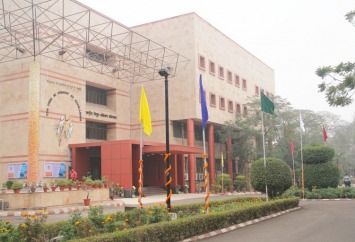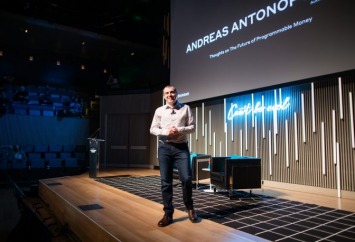Blockchain and Crypto in Schools
These are just two examples of applications that can be covered by computer science education, showing how it can be applied in the real world. Blockchain instructs on data structures and abstract math, while crypto adds in financial and investing literacy. This is being widely adopted and expanded upon, starting up early to hone critical logic and quantitative skills early in life.
- Nineteen states have set aside a grand total of $62 million to give K-8 teachers professional learning opportunities in computer science.
- As of March 2019, Georgia became the newest addition to the list of states requiring computer science education in grades K-8.
- States like Colorado offer free computer science workshops to teachers in grades 1-5.
- Major universities from Stanford through Arizona State are offering classes on crypto; why not start earlier?
The computer science job market is strong, and the number of computer science students doubled just from 2013 to 2017. With these trends showing no signs of stopping, it makes sense to start laying the foundation during elementary and middle school.
The importance of learning financial and technological skills early in life is crucial—children have the ability to retain new information at a much more advanced pace than adults. Studies show that kids’ financial literacy and responsibility skills are somewhat set by age seven. Many teachers understand that technology is evolving at a rapid pace, and coursework has followed suit with progressively more advanced and in-depth math and computer literacy classes available at earlier ages. Setting the groundwork for a cryptocurrency education early in life gives a child a solid foundation and accelerates their ability to learn more advanced skills as they get older, whether they choose to continue in crypto or pursue any of the other wide range of careers that benefit from tech and entrepreneurial know-how.
The field of cryptocurrency is still nascent and will undoubtedly grow along with today’s generation of kids. Blockchain technology is still up and coming, and developers have only scratched the surface of its possibilities—it will only become more omnipresent as people find more mainstream uses for the technology. Teaching today’s children about cryptocurrency and blockchain technology gives them a marked advantage and encourages them to emerge as the next generation of leaders in this technological movement.
We’ve assembled some of our favorite free resources below, broken down in terms of tech and entrepreneurial materials for each major age group in elementary and middle school (K-8). For high school, college, and professional women, please do check out our Women in Crypto piece.
Table of Contents:
- Lower Elementary Students (K-2) – Tech | Entrepreneurial
- Upper Elementary Students (3-5) – Tech | Entrepreneurial
- Middle School Students (6-8) – Tech | Entrepreneurial
Lower Elementary Students (K–2)
It’s never too early for a kid to start developing the building blocks that will accelerate his or her understanding of cryptocurrency down the line. At this age, as children develop their basic comprehension skills, it’s valuable to help them build that foundation and get them thinking about money, technology, and crypto.
Blockchain and tech resources
Keep learning light and entertaining with visuals and puzzles that will keep younger kids interested without overwhelming them. Expose them to technology, and relate crypto concepts to their lives to improve their comprehension.
- Wixie: Before introducing young children to coding and crypto, develop their technical literacy skills and get them more comfortable using technology. Wixie allows students to build creative digital projects; the website provides examples of how the platform has been used in kindergarten classrooms here.
- Coding for Kindergarteners: Teach younger children the fundamental concepts that will allow them to develop their understanding of crypto much more quickly as they grow. This article demonstrates how to get young children thinking about coding by relating it to their daily lives.
- Bitsbox: This tool is designed to teach kids aged six to twelve how to code—and makes it fun. Bitsbox caters to a range of skill levels, from basic to more advanced, and it encourages creativity, allowing kids to customize the apps they create within the program.
- Kodable: Much like Bitsbox, Kodable is an app that teaches kids how to code. Kodable is designed to be integrated into teachers’ lesson plans and taught in class, but it can also be used at home, and it teaches a range of skills from basic vocabulary and communication to JavaScript.
- Teaching Blockchain to Kids: Geared more toward parents than educators, this article highlights why it’s important to understand blockchain and provides an action plan for how to learn crypto and how to teach it to kids.
Budding entrepreneurs
Encourage financial responsibility early, so kids develop positive habits at a young age. Teach them basic business skills that will benefit them no matter what career path they eventually pursue.
- Pigzbe: Kids aged six and older can learn about cryptocurrency and the value of money in a supervised environment with this virtual piggy bank. Pigzbe uses blockchain technology to allow kids, family members, and friends to contribute to the account, and kids can spend the money they’ve earned with parental approval.
- Financial Literacy for Kids: This resource offers lesson-plan guidance for teachers that want to teach financial literacy to their students.
- VentureLab for Lower Elementary: Teach your students the entrepreneurial skills that will help them succeed later in life. VentureLab is geared toward teachers and offers lesson plans, course materials, and guidance to steer your class in the right direction.
- Easy Ways to Understand Blockchain: What is blockchain technology? Why is knowledge of blockchain important? What can you do to gain a better understanding? This article answers those questions and gives practical advice on how to learn blockchain.
Upper Elementary Students (3–5)
In the second half of elementary school, students are on their way to becoming more complex thinkers, and they have the education and experience to understand more difficult concepts. Start introducing more technical, hands-on work and ideas and get them practicing.
Blockchain and tech resources
Get kids familiar with coding and have them practice as much as possible. Familiarize them with the concepts of crypto and blockchain, encouraging them to delve deeper in order to understand the fundamental technology that drives cryptocurrency.
- Blockchain Basics: This article explains the concept of blockchain in layman’s terms, and it even includes a short kid-friendly YouTube video that exemplifies what makes blockchain different from other technologies.
- Learn the Basics of Crypto: This interactive page from Coinbase’s website allows beginners to click through and learn the answers to their basic crypto-related questions, everything from “What is cryptocurrency?” to “How can crypto make the world better?” to “Is cryptocurrency legal?”
- Block2TheFuture: This three-day blockchain conference, located on the USS Hornet, offers a kid-friendly itinerary (for ages 13 and under) that includes hands-on activities and the use of Bitcoin onboard.
- Develop Coding Skills
While coding isn’t necessarily a prerequisite to developing blockchain and crypto skills, it’s a huge advantage, and the majority of blockchain developers are well-versed coders. Here’s a simple quiz to help students determine which language to start with: http://www.bestprogramminglanguagefor.me/. Programs like CodeWizardsHQ teach fundamental programming concepts and tie it into existing interests, like gaming and animation. Here are a few of the most widely used programming languages:
- Python: Python is a good beginner’s platform, as it’s easier to use than some other programming languages. Python is used strictly on the back end of webpages.
- JavaScript: JavaScript is another good beginner’s platform, and it can be used on the front end of webpages as well as the back, to provide increased functionality.
- C++: C++ is harder to learn, but it’s an efficient, popular, and widely used language, and an understanding of C++ makes it easier to pick up other programming languages.
- Blockchain in Python: This article explains blockchain to those who already have an understanding of coding, specifically Python.
Budding entrepreneurs
Expose children to the career possibilities facing them if they choose to pursue cryptocurrency. Teach them the entrepreneurial skills they need to start thinking outside the box.
- VentureLab for Upper Elementary: A continuation of the VentureLab program offered for lower elementary, this level provides lesson plans and materials for third to fifth graders, designed to get them thinking in an entrepreneurial mindset and practicing their business and problem-solving skills.
- Cryptocurrency Job Market Infographic: Though elementary school children might not be too focused on their future careers yet, this infographic is a great way to give them a visual sense of what the field of cryptocurrency looks like, opening their minds to the possibilities that await them.
- What Is Cryptoeconomics?: This guide starts simple and works up to technical. It’s a good guide for students who already have an idea of crypto and blockchain but want to bridge the gap between their knowledge and putting it into action.
- How to Become a Blockchain Developer: This guide goes a step deeper than the previous one, focusing specifically on blockchain. Students in late elementary school with a working knowledge of coding and basic crypto could benefit from the guidance it provides, to help them develop a sense of direction and discover what branch of blockchain they might want to pursue.
- Learn How to Invest in Crypto: This module-based program is designed for beginners and is an especially valuable resource for parents and teachers who want to learn more about investing in crypto and have a working understanding of the financials before teaching it to their kids.
Middle Schoolers
Students in middle school are ready to really refine their understanding of blockchain and crypto, especially if they already have a foundation in computer science. Have them practice their hands-on skills on a deeper level and keep them exposed to the newest trends in the field.
Blockchain and tech resources
Get students deeply involved in blockchain-specific platforms. Familiarize them with the specific concepts of cryptocurrency and blockchain so they can develop a full understanding of how these technologies work and how they can manipulate them on their own.
- Adara Academy: This free, community-centered resource provides courses, videos, and articles for people of all ages interested in crypto. Kids can customize their experience by choosing which resources to utilize, or they can go a step further and apply for one-on-one sessions with experts.
- Books for Learning Crypto: It’s tough to keep up with changing technology, but this article contains a list of books that provide a foundational understanding of crypto and will likely stay relevant for years to come.
- Bitcoin in the Classroom: This resource provides lesson plan ideas and an online lab specifically related to Bitcoin. It teaches everything from basic crypto vocabulary to creating a cryptocurrency to use in the classroom.
- Greenlight for Girls – This program runs worldwide, facilitating STEM exposure for girls ages 11-15. There’s an entire range of options including materials, workshops, mentorships, and field trips as part of this global effort.
Technical Skills for Hands-On Experience
For those students who want to really get their feet wet and stay on the cutting edge of blockchain and crypto, this list includes some of the programming languages and platforms currently in high demand.
- Ethereum: The leading blockchain technology platform allows users to develop smart contracts, or blockchain-based, decentralized applications.
- Solidity: This blockchain-specific language documentation tool enables users to create smart contracts and create their own cryptocurrency system.
- Hyperledger Composer: Still in development, this blockchain tool can be used by developers and non-developers alike; it aims to streamline the development of blockchain-based business networks. This is a useful resource even for those who don’t know how to code.
- Summer Coding Bootcamp: Encourage kids to continue learning through the summer by enrolling them in a summer coding bootcamp. There are also occasional crypto/blockchain bootcamps geared toward kids, hosted by groups such as the Cameroon Blockchain Business Council—keep an eye out for those as they’re announced.
- CodeWizardsHQ: Here, students effectively attend coding school that lets them learn new language and ways of thinking while building their portfolio, and that can eventually directly match them up with real-world companies.
- Girls Who Code: This program offers resources for middle school girls and kids as young as third grade, with the aim of closing the gender gap in tech.
Budding entrepreneurs
Prepare middle schoolers for the job market early—build their business skills and expand their creative thinking. Instill in them a sense of responsibility so they have a good head on their shoulders as they move toward college and the workforce.
- VentureLab for Middle and High School: This portion of the VentureLab platform caters specifically to middle school and high school students. Older kids will learn to refine their business skills with hands-on assignments and immersive projects, such as generating and pitching business ideas and performing market research.
- Risks for Young People in Crypto: As kids get closer to the age where they can make investments on their own, they might be tempted by the prospect of high returns on their money. This article reminds rookie investors of the value of their money and the risks of investing in crypto.
- Career Trajectories: This article gives kids an idea of the possible career paths they could take if they choose to pursue blockchain and the reasons why those fields have a growing use for it. Having a tangible goal and a sense of purpose is a good motivational tool.
- Why Blockchain Is Important: For those who want to think outside the box, this article highlights the many uses of blockchain beyond just crypto. It shows kids how versatile and important blockchain technology can be.
- CryptoManiaks: Designed for beginners, CryptoManiaks is geared toward those who want to learn the financial side of crypto. It provides education resources for those who want to understand what crypto and blockchain are, how they work, and how to become a smart investor.




